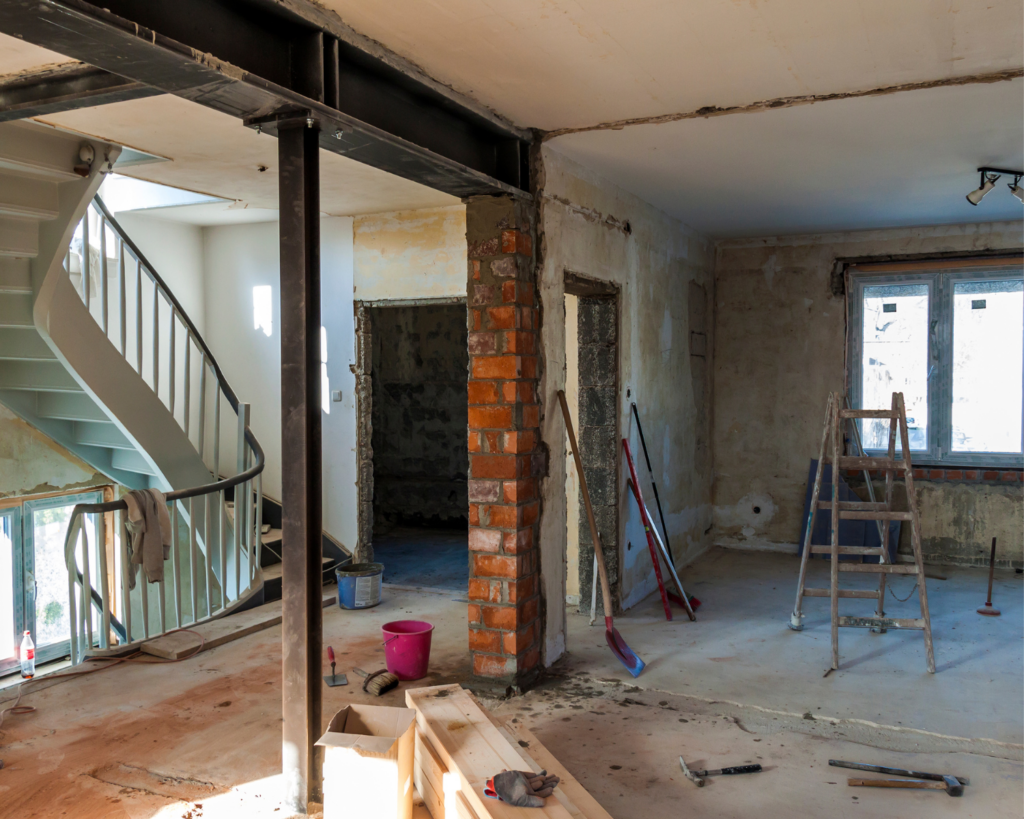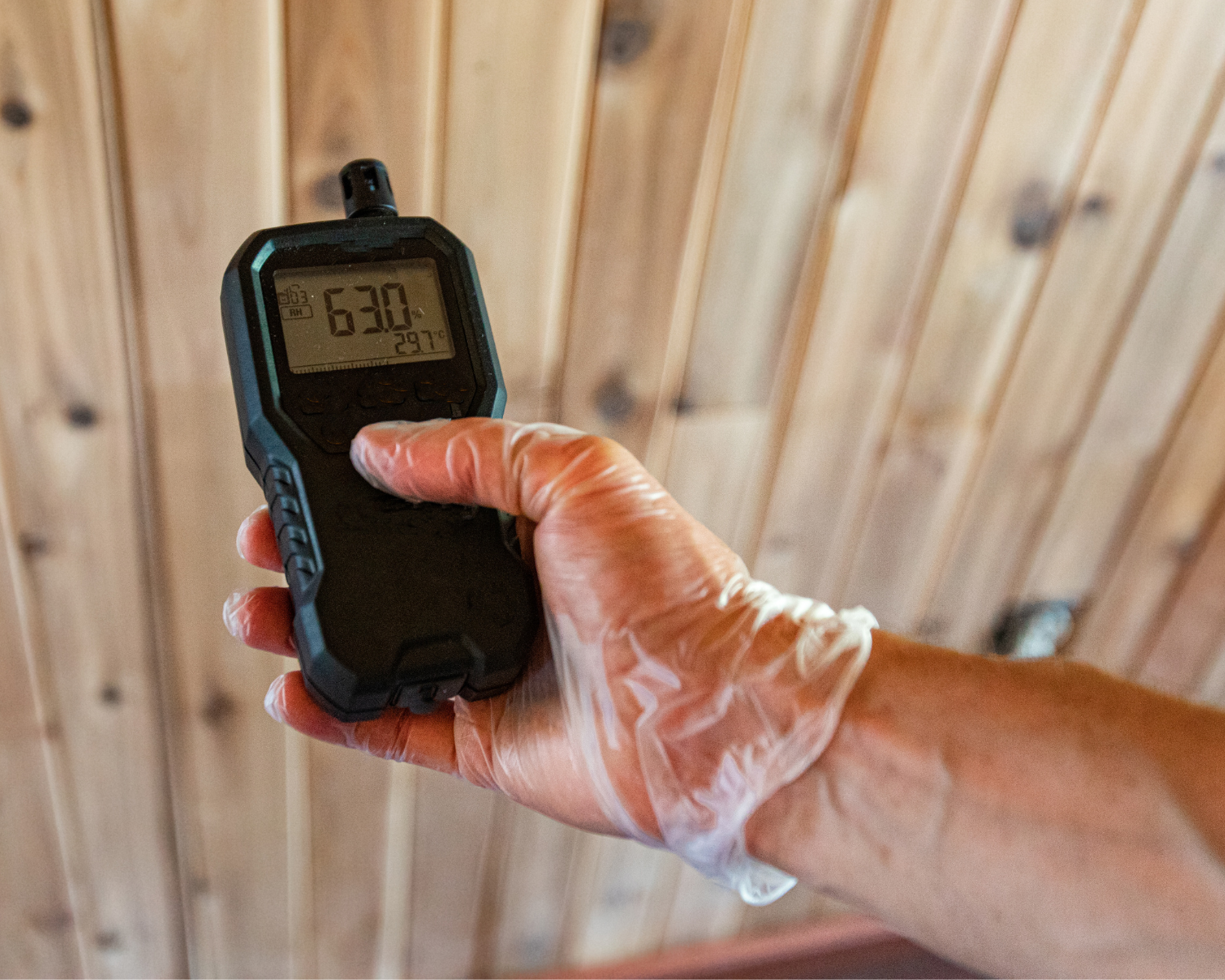Welcome to the first post in our latest series on the signs and symptoms of poor indoor air quality in commercial spaces.
In this series, we will delve into indoor air quality (IAQ) and its impact on commercial spaces. Join us as we uncover the hidden challenges and less-acknowledged sources of indoor air pollutants that affect businesses and occupants alike.
Defining Indoor Air Quality (IAQ) in Commercial Environments
Indoor air quality, commonly known as IAQ, indicates the quality of air within buildings and structures. While the impact of poor indoor air quality on residential spaces has received significant attention, its effect on commercial spaces often remains under-discussed. It is crucial to recognize that poor IAQ can have detrimental effects on businesses and the overall well-being of individuals occupying these spaces.
Commercial spaces present unique challenges when it comes to IAQ. Factors such as higher occupancy rates, increased pollutants from office equipment, and limited ventilation options contribute to specific IAQ concerns in these environments. Understanding these challenges is essential for creating healthier and more productive working environments.
Additionally, various causes of poor indoor air quality often go unnoticed in commercial spaces. These could include volatile organic compounds (VOCs) emitted by cleaning products or office furniture, mould growth due to water leaks, or even inadequate filtration systems. Unveiling these hidden sources is the first step in improving IAQ.
Signs to Help Identify Poor IAQ
To better understand the impact of poor IAQ, it is important to recognize visual, audible, tactile, and health cues that can help identify indoor air quality issues in commercial spaces. Let’s explore some of these cues:
Visual Cues
Visible Mould or Mildew: Mould growth on walls, ceilings, or other surfaces is an observable sign of poor indoor air quality. It is important to address any mould growth promptly, as it can cause health issues and further deterioration of the environment.
Excess Dust: Accumulation of dust on surfaces, such as furniture and floors, indicates possible ventilation or filtration problems. Regular cleaning and maintenance can help alleviate this issue.
Water Damage: Stains, discoloration, or watermarks on walls or ceilings due to leaks or water damage suggest underlying IAQ concerns. Identifying and resolving the source of water intrusion is vital for maintaining a healthy environment.
Stale or Stuffy Air: A visual perception of air that appears stagnant and lacks freshness may indicate inadequate ventilation. Proper airflow is crucial in maintaining good IAQ.
Audible Cues
Audible Signs of Dampness: Water leaks, drips, or running water that can be heard may indicate potential indoor air quality issues. Identifying and addressing these issues promptly is essential for preventing further damage.
HVAC System Noise: Unusual sounds or malfunctions in heating, ventilation, and air conditioning systems could suggest problems affecting air quality. Regular maintenance and inspections are essential to make sure these systems are functioning optimally.
Tactile Cues
Moisture or Dampness: The sensation of damp or moist surfaces, especially in basements or bathrooms, is a sign of poor IAQ. Addressing the source of moisture is crucial in preventing mould growth and maintaining a healthy environment.
Sticky or Clammy Skin: Elevated humidity levels can make the skin feel sticky or clammy. Proper ventilation and humidity control are important in achieving comfortable and healthy IAQ.
Cool or Warm Drafts: Inconsistent temperatures or drafts can be felt, indicating potential issues with ventilation or temperature control systems. These issues should be promptly addressed to maintain a comfortable and healthy working environment.
Health Cues
Poor IAQ can have a major impact on health. Some common health cues associated with poor IAQ include:
Allergic Reactions: Sneezing, coughing, congestion, itchy or watery eyes, and skin rashes are common allergic reactions that may indicate poor IAQ.
Respiratory Issues: Shortness of breath, wheezing, exacerbation of asthma symptoms, lung irritation, and other respiratory problems can be linked to poor IAQ.
Fatigue and Discomfort: Feeling tired or lethargic, regular headaches, dizziness, poor concentration, and reduced productivity may be signs of poor IAQ affecting overall well-being.
Irritation: Eye, nose, and throat irritation are symptoms commonly associated with poor IAQ. These issues should not be ignored, as they can affect daily comfort and overall health.
Understanding these signs empowers commercial space managers and occupants to take prompt action when faced with potential IAQ issues. Look out for the next post in our series, where we will dive deeper into specific IAQ challenges in commercial spaces.

IAQ Challenges in Different Types of Commercial Spaces
As we navigate the landscape of indoor air quality (IAQ) and its implications for commercial spaces, it becomes evident that each type of business faces a distinct set of challenges in maintaining a healthy indoor environment. Delving into these diverse challenges is crucial for tailoring effective strategies that address poor indoor air quality across various industries.
Offices and Corporate Environments:
Open offices: The prevalent trend of open office designs contributes to increased concentrations of airborne pollutants. Limited physical barriers can lead to the rapid spread of pollutants, leading to signs of poor indoor air quality.
Electronic Equipment Emissions: The extensive use of electronic devices such as computers, printers, and photocopiers releases pollutants, including volatile organic compounds and other airborne particles, leading to poor indoor air quality.
Volatile Organic Compounds (VOCs): Office furniture, carpets, adhesives, and cleaning products can emit VOCs.
Inadequate Ventilation: Insufficient fresh air intake and poor ventilation systems can result in the buildup of pollutants. Stale air, lack of oxygen, and an increased concentration of contaminants become concerns.
Poor Filtration Systems: Ineffective or neglected HVAC filtration systems can allow the circulation of dust, allergens, and particulate matter, adversely affecting the quality of indoor air.
Biological Contaminants: Moisture-prone areas, such as poorly ventilated bathrooms or areas with water leaks, can lead to the growth of mould and bacteria, contributing to respiratory issues and unpleasant odours.
Inadequate Cleaning Practices: Irregular cleaning schedules and improper cleaning products can result in the accumulation of dust, dirt, and allergens on surfaces, impacting both IAQ and overall cleanliness.
Insufficient Outdoor Air Exchange: Limited exchange of indoor air with fresh outdoor air can lead to a buildup of pollutants indoors, causing poor indoor air quality. This is particularly relevant in buildings with sealed windows or limited natural ventilation.
Building Materials and Furnishings: Off-gassing from new furniture, carpets, and construction materials can release pollutants such as formaldehyde and contribute to poor indoor air quality.
High Occupancy Rates: Offices with a high density of occupants can lead to increased levels of carbon dioxide (CO2) and other pollutants. Inadequate ventilation for the number of people present is a common challenge in crowded office spaces.
Temperature and Humidity Variations: Fluctuations in temperature and humidity levels can impact mould growth, cause discomfort, and affect the overall IAQ. Poor control of these factors can lead to health and productivity issues.
Restaurants and Food Establishments:
Kitchen Emissions: Cooking activities release heat, moisture, and cooking by-products, contributing to poor indoor air quality with grease particles and cooking fumes.
Odour Management: Persistent food odours can be challenging to control, affecting both the dining and kitchen areas.
Airborne Contaminants from Food Preparation: Slicing, chopping, and other food preparation activities can release particles and contaminants into the air, leading to poor indoor air quality.
High Occupancy and Customer Traffic: Frequent customer turnover and high foot traffic introduce outdoor pollutants and lead to symptoms of poor indoor air quality.
Exhaust System Maintenance: Ensuring proper maintenance of kitchen exhaust systems is crucial to prevent the buildup of pollutants and maintain a healthy environment without poor indoor air quality.
Carbon Monoxide (CO) Risks: Gas-burning appliances, such as stoves and ovens, pose a risk of carbon monoxide emissions, and they require vigilant monitoring and proper ventilation.
Cleaning Chemicals: The use of cleaning chemicals in kitchens and dining areas can emit VOCs and other pollutants into the air.
Waste Management: Improper waste disposal practices can lead to unpleasant odours and the release of airborne contaminants.
Humidity Control: Kitchens can have high humidity levels, creating conditions favourable for mould growth. Proper ventilation and humidity control are essential.
Outdoor Air Quality: The proximity of outdoor sources, such as traffic or industrial emissions, can impact IAQ in restaurant spaces, especially in urban environments.
Retail Spaces:
Merchandise Off-Gassing: The introduction of new furniture, products, and store materials in retail spaces can contribute to poor indoor air quality. Off-gassing, the release of VOCs and other chemicals from these items, is a unique concern. Common culprits include adhesives, dyes, and finishes used in manufacturing. As these items arrive and are displayed in the retail environment, they can emit pollutants that may lead to signs of poor indoor air quality.
Diverse Indoor Activities: Retail spaces are dynamic environments with diverse activities taking place simultaneously. From customers trying on clothing to employees using cleaning products, each activity introduces unique pollutants into the air. Additionally, the variety of materials present, such as clothing, electronics, and packaging, adds to the complexity of managing signs of poor indoor air quality.
Healthcare Facilities:
Stringent Cleanliness Requirements: Healthcare facilities demand high levels of cleanliness to avoid spreading infections. The frequent use of strong disinfectants and cleaning agents can release volatile organic compounds (VOCs) and other indoor pollutants.
Healthcare-Associated Infections (HAIs): The constant battle against HAIs requires the use of various chemicals and antimicrobial agents, potentially leading to elevated levels of indoor pollutants and challenging poor indoor air quality management.
Chemical Sensitivities of Patients: Patients in healthcare facilities may have heightened sensitivities to indoor pollutants due to underlying health conditions. Managing poor indoor air quality becomes critical to support the well-being of individuals with compromised health.
Gyms and Fitness Centres:
Particulate Matter from Weight Lifting: Weight lifting activities can generate airborne particles, including dust and particulate matter, which may contribute to respiratory discomfort and overall air quality challenges.
Indoor Pollutants from Rubber Flooring and Equipment: The use of rubber flooring and equipment materials may result in the release of VOCs and other pollutants, impacting the overall indoor air quality in gyms.
Educational Institutions
Diverse Classroom Activities: The diverse range of activities in educational institutions, from art projects to science experiments, introduces a variety of pollutants into the air, requiring tailored IAQ solutions.
Classroom Supplies: Materials used in classrooms, such as glues, paints, and markers, can emit volatile organic compounds (VOCs) and other pollutants, presenting unique challenges for handling poor indoor air quality.
Student Activities and Events: School events, performances, and extracurricular activities can introduce additional challenges to IAQ, particularly in shared spaces, auditoriums, and gymnasiums.
In the upcoming section of this blog post, we will examine some of the factors that pose IAQ challenges across these different sectors, and the larger challenges that face poor indoor air quality at a global level.

The Impact of Construction, Furnishing, and Global Standards on Indoor Air Quality in Commercial Spaces
In this section of the blog post, we will look at the concealed impact of construction and furnishing materials. Commercial spaces often incorporate a myriad of materials and furnishings that contribute to poor indoor air quality. Many building materials, like paints, adhesives, and composite wood products, release volatile organic compounds (VOCs) over time. These compounds can lead to respiratory issues, headaches, and overall discomfort for occupants – all signs of poor indoor air quality.
Unveiling Off-Gassing
Ever walked into a new building and noticed that distinct “new building” smell? That scent is a telltale sign of off-gassing – a process where organic chemicals from building materials are released into the air. This release, often in the form of gases or particulate matter known as Volatile Organic Compounds (VOCs), is a concealed contributor to poor indoor air quality.
Cleaning Products and Disinfectants
The quest for cleanliness in commercial spaces sometimes leads to the use of potent cleaning products and disinfectants. While they effectively combat germs, these chemicals release harmful pollutants into the air. Chlorine, ammonia, and various synthetic fragrances can pose respiratory risks and generate poor indoor air quality. Striking a balance between maintaining a hygienic environment and ensuring occupant health is pivotal.
Occupant Activities
The activities of individuals within commercial spaces also contribute to hidden pollutants. Smoking, for example, introduces harmful chemicals into the air, affecting both smokers and nonsmokers. Similarly, the use of personal care products with high VOC content can add to the overall pollution load. Promoting smoke-free policies and encouraging the use of low-emission personal care products are steps toward creating a healthier indoor environment.
HVAC Systems
Heating, ventilation, and air conditioning (HVAC) systems, essential for maintaining comfortable indoor temperatures, can inadvertently contribute to hidden pollutants. Inefficient or poorly maintained HVAC systems may circulate dust, mould spores, and other contaminants throughout the space. Regular maintenance, timely filter replacements, and the incorporation of advanced air purification technologies are essential in ensuring that these systems enhance rather than compromise indoor air quality.
Electronic Equipment
The prevalence of electronic equipment in modern commercial spaces introduces yet another dimension of hidden pollutants. Printers, copiers, and computers release particulate matter and potentially harmful chemicals during operation. Proper ventilation and strategic placement of electronic equipment, coupled with the use of energy-efficient and low-emission devices, can help minimise the impact of these pollutants.
Strategies to Mitigate Off-Gassing in Commercial Interiors
Choose Low-VOC Materials: Opt for building materials, finishes, and furnishings that have low or no VOC content. Look for products with certifications indicating compliance with standards for low emissions.
Prioritise Natural and Sustainable Materials: Select natural and sustainable materials like solid wood, bamboo, or recycled content products. These materials usually have lower levels of off-gassing compared to their synthetic counterparts.
Ventilation and Air Exchange: Implement robust ventilation systems to facilitate air exchange and reduce the concentration of VOCs indoors. Incorporate strategies like natural ventilation, mechanical ventilation, or a combination of both.
Allow for Off-Gassing Before Occupancy: Plan for adequate off-gassing time by completing construction and interior installations well in advance of occupancy. This allows volatile compounds to dissipate before the space is used.
Use Low-VOC Paints and Finishes: Choose paints, adhesives, and finishes with low VOC content. Water-based paints and finishes are often lower in VOCs compared to solvent-based alternatives.
Seal and Protect Surfaces: Apply sealants to surfaces to encapsulate potential off-gassing sources. This helps in preventing VOCs from being released into the indoor air.
Install Air Purification Systems: Incorporate air purification systems equipped with HEPA filters and activated carbon to capture and eliminate VOCs. This is particularly useful in spaces where off-gassing is a continuous concern.
Implement Green Building Practices: Embrace green building standards and practices, such as LEED certification, which promote the use of eco-friendly materials and construction procedures that minimise off-gassing.
Educate Stakeholders: Educate architects, designers, contractors, and building owners about the importance of selecting low-emission materials and the potential health risks associated with off-gassing. Foster a collective commitment to prioritising indoor air quality.
Continuous Indoor Air Quality Monitoring: Conduct continuous indoor air quality monitoring to keep track of VOC levels and identify any emerging issues. This proactive approach ensures timely intervention and corrective measures.
Utilise Pre-finished Materials: Opt for pre-finished materials that have undergone off-gassing processes during manufacturing. This can help reduce the on-site release of VOCs, contributing to a healthier indoor environment.
Implement a Material Selection Policy: Develop and enforce a comprehensive material selection policy that prioritises low-VOC options. This policy can guide decision-making processes during the design and construction phases.
Specify Formaldehyde-Free Products: Select products that are formaldehyde-free or have low formaldehyde emissions, especially for materials like particleboard, plywood, and insulation.
Create Designated “Off-Gassing” Areas: Designate specific areas or rooms where materials with higher off-gassing potential are installed. This allows for localised off-gassing management without compromising the overall indoor air quality.
Stay Informed and Updated: Keep abreast of advancements in materials science and technology to identify emerging low-VOC alternatives. Regularly update design and construction teams on new strategies and products that contribute to mitigating off-gassing.
By incorporating these strategies, commercial interiors can be designed and constructed to minimise off-gassing, fostering healthier and more sustainable indoor environments for occupants.
Challenges in Establishing Global Standards
One of the significant hurdles in ensuring consistent indoor air quality across the globe is the absence of universally accepted and strict IAQ standards. While organisations recognise the importance of establishing benchmarks, the diversity in regulations from country to country creates a fragmented landscape.
Navigating Existing Guidelines: The Role of WHO
In the absence of a singular global standard, organisations often turn to guidelines provided by respected entities such as the World Health Organization (WHO) to tackle poor indoor air quality. While WHO offers valuable insights and recommendations, these guidelines are not universally mandated or enforced. This reliance on voluntary guidelines rather than binding standards allows for a range of interpretations and implementations, contributing to the ongoing challenge of achieving consistent indoor air quality levels.
UK’s NICE Takes a Step Forward
Acknowledging the critical need for comprehensive guidelines, the National Institute for Health and Care Excellence in the UK has taken a commendable step in the right direction. By actively developing guidelines specific to indoor air quality, the UK is recognising the importance of addressing this issue at a national level. However, the challenge remains in extending and enforcing these guidelines on a broader international scale.
In the upcoming section of this post, we will explore some of the IAQ monitoring technologies that are particularly relevant for commercial spaces, as well as methods of engaging employees and other occupants in managing IAQ in these spaces in a holistic way.

IAQ Monitoring Technologies and Occupant Engagement Strategies for IAQ in Commercial Spaces
As businesses increasingly recognise the profound impact of poor indoor air quality (IAQ) on health, productivity, and overall well-being, the imperative for advanced monitoring technologies has become paramount. This case study explores how IAQ monitoring technologies are evolving for diverse uses in commercial spaces, with a focus on a prominent company headquarters in Asia.
Understanding Air Quality’s Bottom-Line Impact
Recent data from The National Bureau of Economic Research in the U.S. underscores the significant impact of poor air quality on business productivity. For instance, a study revealed that an increase in PM2.5 pollution reduces worker productivity. Additionally, maintaining a green environment with low emissions of volatile organic compounds (VOCs) led to a remarkable improvement in employee knowledge application.
Adapting Monitors to Meet Certification Standards
To address the increasing emphasis on IAQ, businesses are seeking tools that measure and maintain indoor air at levels conducive to well-being. Certifications, such as the IWBI’s WELL v2, have become prestigious accomplishments showcasing an organisation’s commitment to well-being and reducing poor indoor air quality. A recent project achieved this certification by utilising an advanced enterprise air quality monitor providing real-time monitoring of PM2.5, total volatile organic compounds (TVOCs), and CO2.
Monitoring Air Quality in a Noteworthy Headquarters
This project secured its certification by utilising an advanced IAQ monitor, ensuring a healthy indoor environment and reduced signs of poor indoor air quality. The monitor’s ability to meet and surpass relevant standards proved instrumental in maintaining a healthy indoor environment.
Ensuring Comfort with Comprehensive Monitoring
Beyond measuring traditional pollutants, IAQ monitors address additional standards by monitoring temperature and humidity levels. Maintaining optimal humidity levels is crucial, as deviations can impact mood and performance and even lead to the growth of pathogens. The IAQ monitor collects data on these parameters regularly, ensuring a comfortable and healthy indoor environment that does not display signs of poor indoor air quality.
User-friendly displays and Uninterrupted Monitoring
Standards require clear displays for monitoring tools. The IAQ monitors meet this requirement with a simple, intuitive, and easy-to-read data panel. Moreover, they satisfy the monitoring frequency and data storage requirements, ensuring no data points are lost.
Streamlined Sensor Maintenance for Reliability
One of the challenges in air monitoring is sensor maintenance. Traditional equipment often requires recalibration at regular intervals. The latest IAQ monitors overcome this challenge with a modular system, making sensor recalibration a simple process. The entire process ensures continuous and reliable monitoring of poor indoor air quality.
Choosing a Trusted Monitoring Solution
While several monitoring solutions exist in the market, some stand out as a trusted choice for organisations. Distinguished by their real-time IAQ monitoring capabilities, easy maintenance, and ability to meet and exceed relevant standards, they make an ideal solution for businesses aiming for a healthier indoor environment without poor indoor air quality.
Occupant Engagement Strategies for Effective IAQ Management
Effectively managing indoor air quality (IAQ) in commercial spaces involves not only advanced technologies but also active engagement with building occupants. Implementing occupant engagement strategies can enhance awareness, cooperation, and overall IAQ improvement.
Here’s a list of strategies for promoting occupant engagement in IAQ management:
Educational Initiatives: Fostering IAQ Awareness
In managing IAQ within commercial spaces, occupant engagement strategies are crucial for fostering awareness and active participation. Educational campaigns play a pivotal role in elucidating the significance of IAQ for both individual health and overall productivity. Utilising multimedia content, these campaigns aim to vividly illustrate the impact of pollutants on well-being, emphasising occupants’ roles in maintaining a healthy indoor environment.
Effective Communication Platforms: Keeping Occupants Informed
Establishing effective communication platforms is essential to disseminating IAQ updates and information. Leveraging channels such as emails, newsletters, or intranet platforms ensures that occupants are regularly informed about the dangers of poor indoor air quality and IAQ management. Additionally, the integration of digital signage in common areas displaying real-time IAQ data and educational content enhances visibility and engagement.
Interactive Learning: Workshops and Training Sessions
Workshops and training sessions serve as interactive forums to impart knowledge regarding IAQ to occupants. Offering hands-on training on the proper usage of ventilation systems empowers individuals with practical skills to contribute actively to IAQ improvement efforts. Moreover, occupant surveys play a crucial role in understanding the concerns and perceptions related to poor indoor air quality. By utilising survey feedback, IAQ strategies can be tailored to meet specific occupant needs, fostering a sense of inclusivity and involvement in decision-making processes.
Wellness Integration: Enhancing Workplace Well-being
Integrating IAQ discussions into workplace wellness programs enhances occupant engagement. By showcasing the interconnection between a healthy indoor environment and overall well-being, wellness programs encourage employees to adopt IAQ-friendly practices as part of their routine. Mobile apps with user-friendly interfaces offer occupants real-time access to IAQ data and personalised tips, fostering engagement through gamification elements.
Collaborative Planning: Involving Occupants in IAQ Decision-Making
Involving occupants in IAQ planning, such as establishing committees with representatives from various departments, encourages open dialogue and collaboration. Visual aids, including posters and graphics strategically placed in high-traffic areas, reinforce IAQ best practices visually. Regular workshops with IAQ experts provide ongoing education, offering a platform for occupants to ask questions and share concerns about signs and symptoms of poor indoor air quality.
Biophilic Elements: Enhancing IAQ with Greenery
The incorporation of indoor plants and green spaces not only enhances IAQ but also creates designated areas for occupants to enjoy. Providing personal IAQ monitors or sensors empowers individuals to take ownership of their immediate environment. Incentive programs and reward systems recognise and celebrate IAQ-friendly actions, motivating continued commitment.
Sustainability Alignment: IAQ Initiatives and Corporate Goals
Aligning IAQ initiatives with corporate sustainability goals emphasises the broader environmental impact of IAQ improvements on energy efficiency. Lastly, sharing regular IAQ performance reports fosters transparency, keeps occupants informed about improvements, and reinforces a culture of accountability and sustained IAQ awareness.
In Conclusion
In wrapping up, understanding and addressing poor Indoor Air Quality (IAQ) in commercial spaces is crucial for the health of businesses and occupants alike. The highlighted cues – visual, audible, tactile, and health-related – offer a straightforward guide to spotting IAQ issues. Exploring hidden pollutants and their health impacts underscores the need for proactive measures. Luckily, there are multiple practical solutions, from advanced IAQ tech for commercial use to strategies for engaging occupants in the quest for better air quality. Armed with this knowledge, businesses can prioritise health and productivity in their commercial spaces.




Leave a Reply